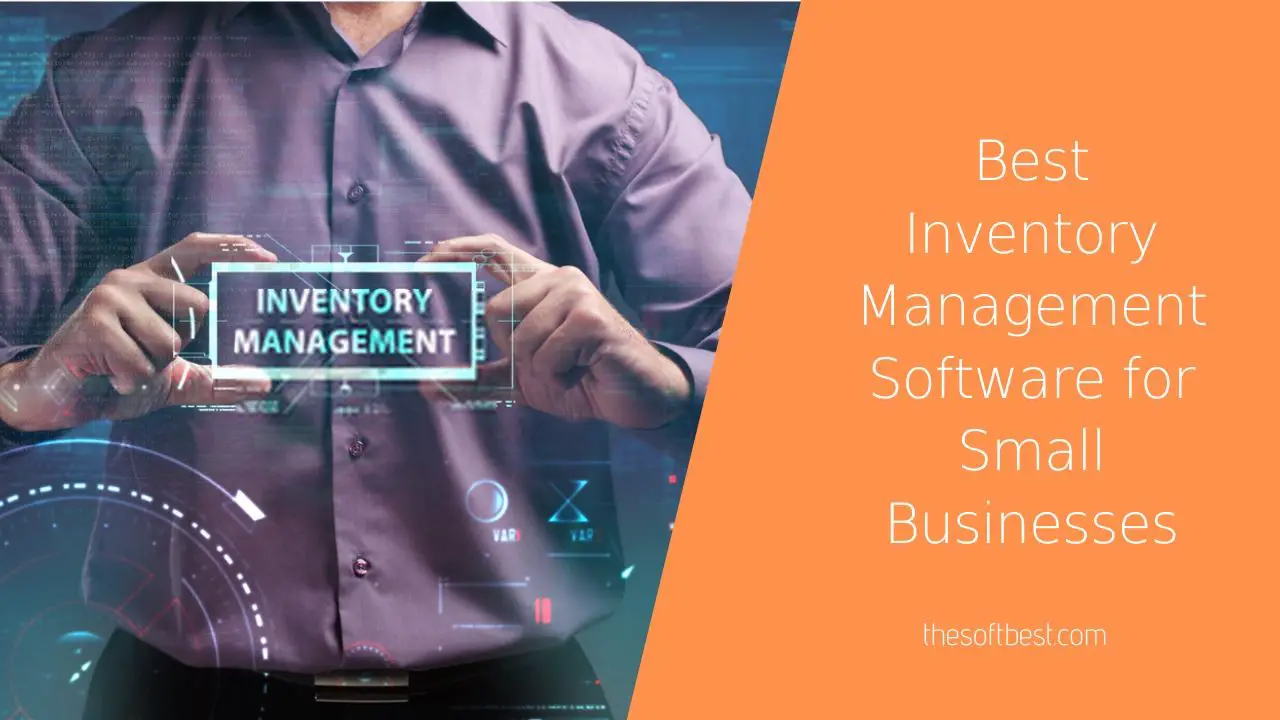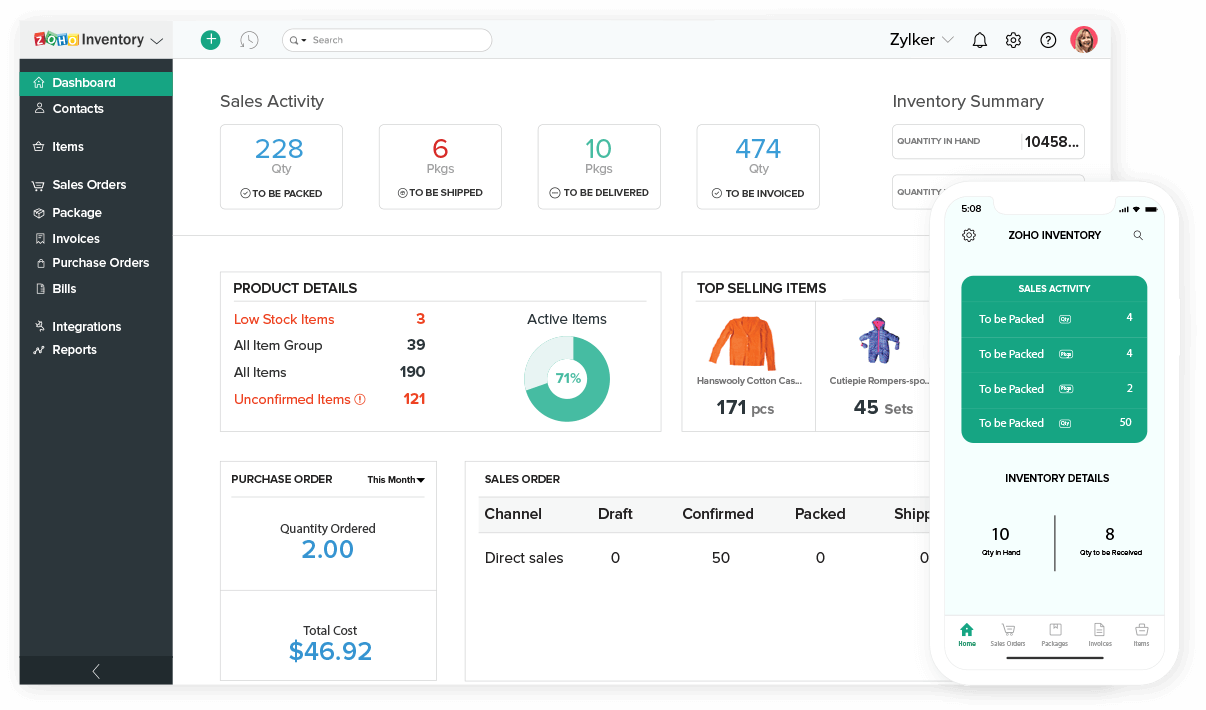Best inventory management software for small businesses sets the stage for this enthralling narrative, offering readers a glimpse into a story that is rich in detail and brimming with originality from the outset. Dive into the realm of inventory management and uncover the secrets to optimizing your stock, boosting profits, and revolutionizing your small business.
The content of the second paragraph that provides descriptive and clear information about the topic
Understanding Inventory Management for Small Businesses
Effective inventory management is crucial for small businesses to maintain optimal stock levels, reduce costs, and enhance customer satisfaction. It involves the processes of tracking, controlling, and optimizing the flow of goods from suppliers to customers.
Challenges Faced by Small Businesses in Managing Inventory
Small businesses often encounter specific challenges in managing inventory, including:
- Limited Resources: Small businesses may have fewer resources, such as space, staff, and capital, to dedicate to inventory management.
- Fluctuating Demand: Demand for products can vary significantly, making it difficult to predict optimal inventory levels.
- Lack of Expertise: Small businesses may not have access to specialized knowledge or technology to implement efficient inventory management practices.
Best Practices for Optimizing Inventory Levels
To optimize inventory levels, small businesses can adopt best practices such as:
- Accurate Inventory Tracking: Using a reliable inventory management system to track stock levels, purchases, and sales in real-time.
- Safety Stock: Maintaining a buffer of additional inventory to cover unexpected fluctuations in demand.
- Just-in-Time Inventory: Ordering inventory only when needed to minimize storage costs and reduce the risk of obsolescence.
- Regular Inventory Audits: Conducting regular physical counts to verify inventory accuracy and identify discrepancies.
- Collaboration with Suppliers: Establishing strong relationships with suppliers to ensure timely deliveries and minimize lead times.
Key Features of Inventory Management Software

Inventory management software empowers small businesses with essential tools to streamline their operations, reduce costs, and enhance customer satisfaction. These solutions offer a comprehensive range of features that cater to the specific needs of small businesses, providing real-time visibility into inventory levels, automated processes, and advanced reporting capabilities.
Let’s delve into the key features of inventory management software and explore how they can benefit your small business:
Essential Features
- Centralized Inventory Management: Manage all inventory items from a single platform, providing a consolidated view of stock levels across multiple locations and channels.
- Real-Time Inventory Tracking: Track inventory in real-time, ensuring accurate and up-to-date information on stock levels, preventing overselling and stockouts.
- Automated Inventory Replenishment: Set minimum inventory levels and automate the reordering process, eliminating manual tasks and ensuring timely restocking.
- Inventory Forecasting: Analyze historical data to forecast future demand, optimizing inventory levels and minimizing the risk of overstocking or understocking.
- Multi-Location Support: Manage inventory across multiple locations, warehouses, or retail stores, providing a comprehensive view of stock levels and facilitating efficient distribution.
- Reporting and Analytics: Generate comprehensive reports on inventory performance, stock turnover, and other key metrics, providing valuable insights for informed decision-making.
- Integration with Other Systems: Seamlessly integrate with accounting, CRM, and e-commerce systems, automating data exchange and streamlining business processes.
Benefits for Small Businesses
The implementation of inventory management software brings numerous benefits to small businesses, including:
- Reduced Costs: Minimize inventory carrying costs, prevent overstocking, and optimize purchasing decisions, leading to significant cost savings.
- Improved Customer Satisfaction: Ensure product availability, reduce backorders, and enhance customer experience by meeting demand effectively.
- Increased Efficiency: Automate inventory management tasks, freeing up valuable time and resources for other business-critical activities.
- Better Decision-Making: Access real-time data and insights to make informed decisions about inventory levels, purchasing, and sales strategies.
- Enhanced Scalability: As your business grows, inventory management software can easily scale to accommodate increasing inventory volume and complexity.
Examples of Software
Several inventory management software solutions are available to meet the needs of small businesses, including:
- QuickBooks Commerce: Provides a comprehensive inventory management solution integrated with QuickBooks accounting software.
- Zoho Inventory: A cloud-based inventory management system with features tailored for small businesses.
- Fishbowl Inventory: A robust inventory management solution designed specifically for small and medium-sized businesses.
- Cin7 Inventory Management: An all-in-one inventory management platform that includes advanced features like multi-warehouse management and e-commerce integration.
Types of Inventory Management Software

Inventory management software can be categorized into three main types:
- On-Premise Software: Installed directly on the business’s own computers or servers, providing full control over the software and data.
- Cloud-Based Software: Accessed through the internet, allowing users to manage inventory from any location with an internet connection.
- Hybrid Software: Combines features of both on-premise and cloud-based software, providing flexibility and customization options.
Advantages and Disadvantages of Each Type:
On-Premise Software:
- Advantages:
- Greater control over data and security.
- Customization options tailored to specific business needs.
- No recurring subscription fees after initial purchase.
- Disadvantages:
- Higher upfront costs for hardware and software.
- Requires IT expertise for installation and maintenance.
- Limited accessibility from remote locations.
Cloud-Based Software:
- Advantages:
- Lower upfront costs and no need for hardware.
- Easy accessibility from anywhere with an internet connection.
- Automatic software updates and maintenance.
- Disadvantages:
- Less control over data and security.
- Limited customization options.
- Recurring subscription fees.
Hybrid Software:
- Advantages:
- Flexibility and customization options.
- Some control over data and security while leveraging cloud benefits.
- Scalability to meet changing business needs.
- Disadvantages:
- Higher costs than cloud-based software.
- Still requires some IT expertise for installation and maintenance.
- May not offer the same level of control as on-premise software.
Examples of Software:
- On-Premise Software: QuickBooks Enterprise, Microsoft Dynamics NAV
- Cloud-Based Software: NetSuite, Oracle NetSuite, SAP Business One
- Hybrid Software: Infor CloudSuite Industrial, Epicor Kinetic
Evaluating Inventory Management Software
Choosing the right inventory management software is crucial for optimizing inventory levels, reducing costs, and improving customer satisfaction. Here are some key factors to consider when evaluating software:
Features and Functionality
- Inventory tracking: Ability to track inventory levels in real-time across multiple locations.
- Order management: Streamlined order processing, including order entry, fulfillment, and tracking.
- Reporting and analytics: Comprehensive reports and dashboards to monitor inventory performance and identify trends.
- Integration with other systems: Compatibility with existing accounting, CRM, and e-commerce platforms.
Ease of Use
The software should be user-friendly and intuitive, with a simple and straightforward interface. This ensures that employees can quickly learn and use the system effectively.
Scalability
Consider the future growth potential of your business. Choose software that can scale with your inventory and order volume as your business expands.
Cost
Software pricing models vary. Determine your budget and consider both the upfront costs and ongoing subscription fees.
Support
Reliable technical support is essential for smooth software implementation and ongoing use. Look for vendors that offer timely and comprehensive support.
Step-by-Step Evaluation Process, Best inventory management software for small business
- Identify your business needs and requirements.
- Research different software options and compare features.
- Request demos and free trials to experience the software firsthand.
- Consider user feedback and reviews.
- Evaluate the cost and support options.
- Select the software that best meets your needs and budget.
Tips for Selecting the Best Software
- Start with a clear understanding of your inventory management challenges.
- Prioritize features that align with your specific business needs.
- Consider the scalability and integration capabilities of the software.
- Look for software with a user-friendly interface and intuitive navigation.
- Read reviews and testimonials from other small businesses to gain insights.
Implementation and Benefits of Inventory Management Software

Implementing inventory management software is a crucial step for small businesses looking to streamline their operations and improve efficiency. The process typically involves several key steps:
- Selecting the right software: Consider your business needs, budget, and industry-specific requirements when choosing software.
- Data preparation: Gather and organize your existing inventory data, including product details, quantities, and locations.
- Software installation and setup: Install the software on your computers or mobile devices and configure it according to your business processes.
- Training and onboarding: Train your staff on how to use the software effectively to ensure smooth implementation.
- Integration with other systems: Connect the software with your accounting, CRM, or e-commerce platform for seamless data flow.
Benefits of Inventory Management Software for Small Businesses
By implementing inventory management software, small businesses can reap numerous benefits that enhance their operations:
- Improved accuracy and reduced errors: Automated inventory tracking eliminates manual errors and ensures accurate data.
- Optimized stock levels: Real-time inventory visibility helps businesses maintain optimal stock levels, reducing overstocking and stockouts.
- Increased efficiency: Streamlined inventory processes save time and effort, allowing businesses to focus on other core activities.
- Enhanced customer satisfaction: Accurate inventory information enables businesses to fulfill orders promptly, improving customer satisfaction.
- Reduced costs: Optimized inventory management helps businesses reduce waste, overstocking, and inventory-related expenses.
Case Study: Successful Software Implementation
XYZ Manufacturing, a small-scale manufacturer, implemented an inventory management software solution. The software helped them streamline their inventory processes, reduce stockouts by 30%, and increase inventory accuracy by 25%. This resulted in significant cost savings and improved customer satisfaction.
Epilogue
The content of the concluding paragraph that provides a summary and last thoughts in an engaging manner
User Queries: Best Inventory Management Software For Small Business
What are the key benefits of using inventory management software for small businesses?
Inventory management software can streamline operations, reduce costs, improve accuracy, and enhance customer satisfaction.
How do I choose the best inventory management software for my small business?
Consider your business needs, budget, and the features offered by different software solutions.
What are some common challenges faced by small businesses in managing inventory?
Challenges include stockouts, overstocking, manual errors, and inefficient processes.